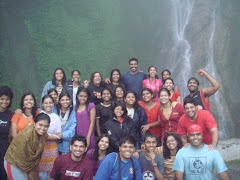In geological terms, this is a young land, formed only a few million years ago by the buckling and folding of the earth's crust as the Indian sub-continent pushed with irresistible force against the immovable mass of Asia. Its basic contours, uplifted by these unimaginable tectonic movements, have been modified over the millennia by the opposite process of erosion, sculpted into the form we see today by wind and water.
The main source of water in this land remains the winter snowfall. Ladakh was once covered by an extensive lake system, the vestiges of which still exist on its south -east plateaux of Rupshu and Chushul - in drainage basins with evocative names like Tso-moriri, Tsokar,and grandest of all, Pangong-tso. The temperature rarely exceeds 27 degree celcuis in summer while in winter it may drop to minus 20 degree celcuis
Made up of two administrative districts - Leh and Kargil, Ladakh covers a total area of about 59,000 square kilometers. Leh is the chief town. Allied ethnologically and geographically with the Tibet region of China, the area has a predominantly Lamaist Buddhist population. It was nominally a dependency of Tibet. After 1531 it was invaded periodically by Muslims from Kashmir; it was annexed to Kashmir in the mid-19th cent.
However today's Ladakh which forms a part of the state of Jammu and Kashmir in India has some of its areas under the illegal occupation of Pakistan and China
Ladakh History
The region of Ladakh once formed part of the erstwhile Kingdom of Ladakh and for nearly 900 years from the middle of the 10 th century existed as an independent kingdom. After 1531, it was periodically attacked by the Muslims from Kashmir, until it was finally annexed to Kashmir in the mid 19th century. The early colonizers of Ladakh included:- the Indo-Aryan Mons from across the Himalayan range, the Darads from the extreme western Himalayas, and the itinerant nomads from the Tibetan highlands. While Mons are believed to have carried north-Indian Buddhism to these highland valleys, the Darads and Baltis of the lower Indus Valley are credited with the introduction of farming and the Tibetans with the tradition of herding. Its valleys, by virtue of their contiguity with Kashmir, Kishtwar and Kulu, served as the initial receptacles of successive ethnic and cultural waves emanating from across the Great Himalayan range.
Its political fortunes ebbed and flowed over the centuries, and the kingdom, was at its best in the early 17th century under the famous king Sengge Namgyal, whose rule extended across Spiti and western Tibet up to the Mayumla beyond the sacred sites of Mount Kailash and Lake Mansarovar.
During this period Ladakh became recognized as the best trade route between the Pubjab and Central Asia. The merchants and pilgrims who made up the majority of travellers during this period of time, travelled on foot or horseback , taking about 16 days to reach Srinagar; though a man in hurry, riding non-stop and with changes of horse arranged ahead of time all along the route, could do it in as little as three days. These merchants who dealt in textiles and spices, raw silk and carpets, dyestuffs and narcotics entrusted their goods to relays of pony transporters who took about two months to carry them from Amritsar to the Central Asian towns of Yarkand and Knotan. On this long route, Leh was the half-way house, and developed into a bustling entreport, it bazaars thronged with merchants from far countries. This was before the wheel as a means of transport was introduced into Ladakh, which happened only when the Srinagar- Leh motor-road was constructed as recently as the early 1960s.
The 434 km Srinagar-Leh highway follows the historic trade route, thus giving travellers a glimpse of villages that are historically and culturally important. The famous pashm (better known as cashmere) was produced in the high altitudes of eastern Ladakh and western Tibet and transported thorough Leh to Srinagar where skilled artisans transformed it into shawls known the world over for their softness and warmth. Ironically, it was this lucrative trade, that finally spelt the doom of the independent kingdom. It attracted the covetous gaze of Gulab Singh, the ruler of Jammu in the early 19th century, and in 1834, he sent his general Zorawar Singh to invade Ladakh. Hence, followed a decade of war and turmoul, which ended with the emergence of the British as the paramount power in north India.
Ladakh, together with the neighbouring province of Baltistan, was incorporated into the newly created State of Jammu & Kashmir. Just over a century later, this union was disturbed by the partition of India, Baltistan becoming part of Pakistan, while Ladakh remained in India as part of the State of Jammu & Kashmir.

No comments:
Post a Comment